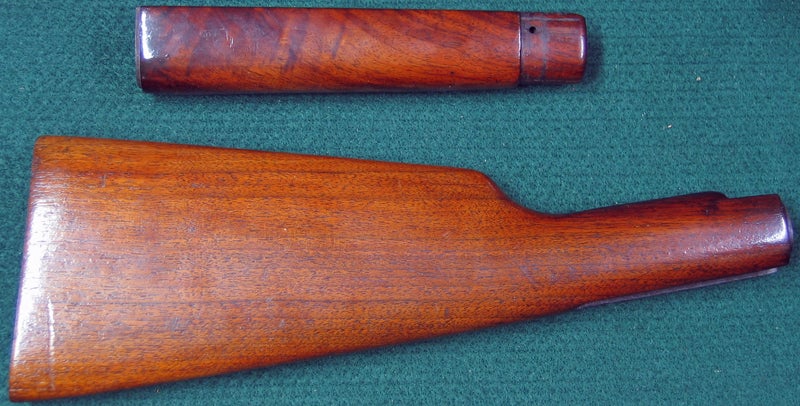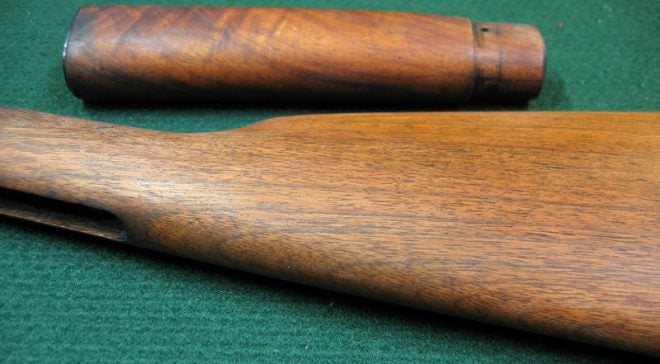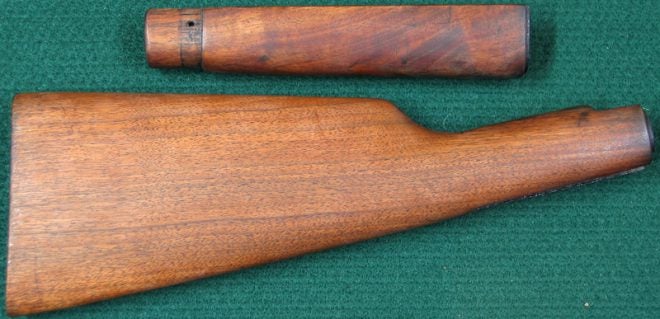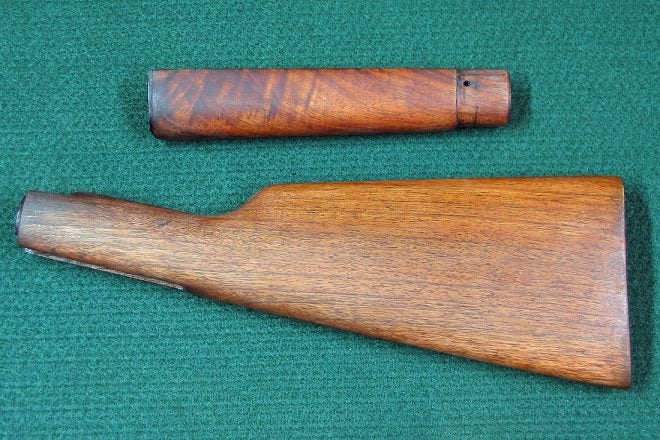27 Photos of Gun Stock Refinishing
Russ Chastain 11.01.17


(Photo © Russ Chastain)
Once I accepted the facts, life got easier. What I needed to do was reduce the finish by removing the glossy part, so the finish ends up in the wood instead of on it, as intended. I did, however. still cling to the hope of some sort of protective finish above the wood’s surface.
I began to remove the gloss using Birchwood-Casey Stock Sheen & Conditioner, but that didn’t work. It’s a mildly-abrasive rubbing compound, and it was too aggressive for this purpose because the Lin-Speed finish was too thin.

(Photo © Russ Chastain)
Once I gave up on any finish above the wood’s surface, I used steel wool to take down the Lin-Speed to the surface of the wood. This left some low-grain areas which remained shiny.
I attempted to use the semi-liquid Stock Sheen & Conditioner compound to “un-shine” the lower areas where the steel wool didn’t reach, such as down in wood pores and recessed areas of the grain. This was folly; some areas did get dulled up, but others did not.

(Photo © Russ Chastain)
In the end, I have a Lin-Speed oil finish with a classic look that certainly won’t reflect and shine in the woods, but isn’t as protective of the wood as I would like. If your firearm is going to see hard use, use something that finishes both in and on the wood (Tru-Oil is the best I’ve found).

Not bad, really. What do you think of it?